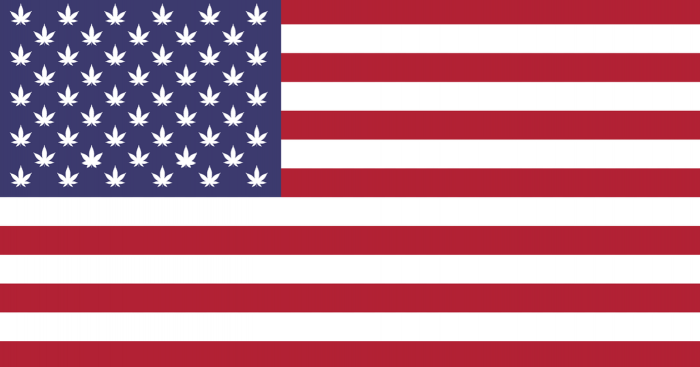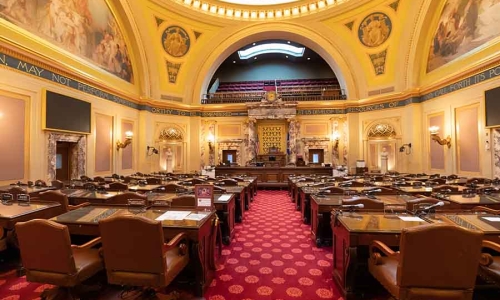How legal weed has changed the USA

Turn an illicit product into a highly taxed and regulated one and you have a classic business experiment.
Do it with a little-studied psychoactive substance that has both medical promise and addictive potential and you have a public health trial, too. That’s what the US has done with cannabis, otherwise known as marijuana, pot or weed. Changes in state laws since 1996 have given 74% of the US population access to some form of legal cannabis. Now President Joe Biden is taking steps toward decriminalizing marijuana on the federal level.
1. What’s been the impact of legalized weed?
It’s been difficult to measure, as each state tracks data differently, if at all. What evidence there is shows that while legitimizing cannabis has generated jobs and tax revenue, the larger effects on society are a mixed bag. The effects on crime rates and social justice have been positive, but not entirely so. Some people seem to benefit from access to marijuana, but there are signs its easy availability puts more people at risk of addiction to it and increases cases of impaired driving.
2. What are the benefits of marijuana?
Apart from getting people high, there’s solid evidence that it reduces chronic pain, multiple sclerosis-related muscle spasms and chemotherapy-related nausea, according to one of the largest studies, a 2017 report that reviewed more than 10,000 scientific abstracts since 1999.
3. What’s the legal landscape of cannabis?
Thirty-seven US states have authorized the marketing of cannabis for people who have a doctor’s recommendation and qualifying ailments, which vary by jurisdiction. Of those states, 18 also allow people 21 and older to possess it for recreational purposes, with restrictions on quantities and public consumption. These liberalizations have given rise to thousands of licensed dispensaries selling weed products. They include flower, the smokable, dried bud of a cannabis plant; edibles, marijuana-infused snacks and drinks; and cartridges filled with cannabis oil for vaping. While the US continued to classify marijuana as illegal, officials in recent years have taken a relatively relaxed approach toward enforcement of that law. On Oct. 6, Biden said he had ordered a review of how federal law addresses marijuana, including whether it should be classified as one of the most dangerous drugs, alongside heroin. He also said he would pardon thousands of Americans convicted of possession.
4. What has legalization done to crime rates?
A decade ago half of all drug-crime arrests in the US were related to cannabis, so not surprisingly such detentions have plunged. Still, the expectation that a licensed weed market would stamp out the illicit marijuana trade is being reassessed as licensed dispensaries struggle to compete with cheaper sellers on the underground market. In Colorado, organized crime linked to the trade actually increased from 31 cases in 2012, the year the state permitted recreational use, to 119 in 2017 before abating to 34 in 2019. Because African Americans as recently as 2018 were arrested for cannabis crimes at nearly four times the rate of White people despite similar levels of use, legalization has been put forward as a fix for the disparities that have flowed from that: disproportionate incarceration, broken homes and arrest records that hamper careers. But it hasn’t been that simple.
5. What’s happened on the race front?
While marijuana arrest rates have plummeted overall, racial disparities have persisted in arrests for violating regulations of legal marijuana. Before and after legalization in Washington state, Black adults went from being 2.5 times to 5 times as likely as White adults to be arrested for unlawful cannabis possession, a 2019 study found. After legalization in Colorado, the greatest decrease in arrests was among White people, down 72% as of 2019, versus a 63% decline for Black people and a 55% decline for Hispanics.
Fifteen states have programs that aim to ensure members of minorities gain a fair share of the new industry’s profits. But in a country in which Black people make up 13% of the population, they own fewer than 2% of cannabis companies, according to a 2022 report from the Minority Cannabis Business Association. One barrier to entry is the difficulty gaining access to the services of banks, many of which eschew these businesses as long as weed is illegal on the federal level.
6. How big is the US cannabis industry?
Sales generated more than $11 billion in tax revenue for states and localities from 2014 through 2021, according to the Institute on Taxation and Economic Policy. Much of the other available data on the industry comes from organizations spawned by it, so should be taken with a grain of salt. The research firm New Frontier Data projects the lawful weed business in the US will bring in sales of $32 billion this year. A joint report by the online marijuana marketplace Leafly and industry consulting firm Whitney Economics estimated that legal cannabis had created the equivalent of 428,000 full-time jobs as of January 2022.
Up, Up and Away
Percentage of people 12 and older who said they’d used marijuana in the previous year in the states that first legalized recreational use
7. How has cannabis use changed?
Before the legal changes, it had been thought that more readily available marijuana might increase casual use by appealing to the so-called cannacurious. Surprising data show it’s also encouraged a rise in hardcore stoners. The US in 2019 saw a significant increase in the percentage of people over 26 who used marijuana in the previous month as well as in the share who used it daily or almost daily, according to an annual government survey. In Colorado, the first state to sanction recreational use, 15% of those age 18 to 25 consumed weed daily, a figure twice as high as the national average. According to a different report, 48% of people in Colorado who used cannabis in 2019 did so on a daily or near-daily basis, up from 44% in 2014. Canada, which authorized recreational use nationwide in 2018, has seen similar results. By the end of 2020, 20% of people reported using marijuana in the previous three months, versus 14% at the outset of 2018. Daily or near-daily use rose, too.
Addiction Concerns
Percentage of people by age group who met criteria for cannabis use disorder in four states before and after recreational marijuana was legalized.
8. What are the worries about increased marijuana use?
-
Cannabis, in particular when smoked, is associated with an increase in chronic bronchitis episodes, according to the 2017 research review. Its impact on asthma, lung function, immunity, heart attack, strokes and diabetes requires more research, the report concluded. It said marijuana use is likely to increase the risk of schizophrenia, other psychoses, social anxiety disorders and depression. Other research, by contrast, has found that recreational access leads to a significant reduction in demand for prescription drugs not only for pain and seizures but also for depression, anxiety, sleep and psychosis.
-
Research has shown lower birth weights for babies exposed to marijuana in the womb, and pregnant women more than doubled their intake of cannabis from 2002 to 2017.
-
Frequent use, according to the US Centers for Disease Control and Prevention, adds to the probability that people will develop cannabis use disorder, a term for addiction. The CDC cites studies estimating that likelihood for all users ranging from 10% to 30%. Among the signs of addiction are cravings, a need to use more of the drug to get the same high, and continued use despite relationship or work problems. The condition can put people at higher risk for other negative consequences, such as problems with attention, memory and learning. Young people appear to be particularly vulnerable: Cannabis is almost as addictive as opioids in teens, a 2021 study concluded. The US surgeon general has said that chronic marijuana use in teens is linked to impaired learning, declines in IQ and school performance, and suicide attempts.
-
A rise in daily consumption has secondary effects: As regular users develop a tolerance for THC, the psychoactive ingredient in marijuana, the industry has increased the potency of its product to keep up. The average percentage of THC in cannabis seized by US officials increased to 14% in 2019 from 5% in 1996.
9. Are legalization’s effects showing up in public health data?
It’s a challenge to draw definitive connections, but there are some signs of this.
-
On the plus side, regulated cannabis can offer a health benefit to those who previously bought the drug on the illicit market, given that laws require legitimate sellers to monitor their wares for contaminants. States with lawful recreational weed had fewer cases of vaping-related lung injuries that were linked to illegally sold cannabis oil, a 2020 study found.
-
On the downside, rates of cannabis use disorder in people age 12 to 17 grew 25% more in states that legalized recreational marijuana than in those that didn’t, according to a 2020 study.
-
Cyclical vomiting, episodes of severe vomiting that have no apparent cause and are associated with daily marijuana use, is on the rise, up 60% nationwide from 2005 to 2014.
-
Since legalization, Colorado has seen an increase in hospitalizations, emergency-department visits and poison-center calls linked with marijuana exposure. Children who stumble upon a parent’s edibles are a particular cause of concern. In 2019 and the two years prior, there were a total of 4,172 exposure cases nationwide in kids 0 to 9 years old, according to a study of calls to poison-control centers, which found that the rate was higher in states with sanctioned recreational use.
10. What about road safety?
Proponents of legalization have posited that lawful weed would make roads safer because people would substitute it for alcohol, which they argue impairs driving more. It’s difficult to get a clear picture of what’s actually happened as there’s no uniform law nationwide on driving while stoned, nor any widely accepted testing method for it. However, the evidence so far suggests the advocates were optimistic.
It shows that legalization has led to more people in the US using cannabis in combination with alcohol and other substances. And in Canada in 2019, the year after legalization, cases of drug-impaired driving rose 43% over the previous year, and the overall incidence of impaired driving increased 19%. That ended a downward trend that had begun in 2011





